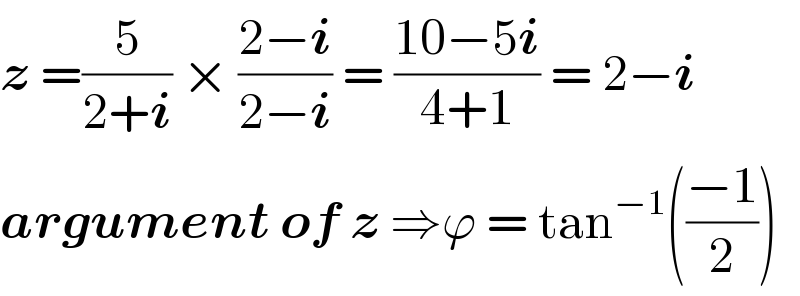
Question and Answers Forum
Question Number 95121 by i jagooll last updated on 23/May/20

Commented by bobhans last updated on 23/May/20

Answered by mathmax by abdo last updated on 24/May/20
![z =(5/(2+i)) we have 2+i =(√5)((2/(√5)) +(i/(√5))) =(√5)(cosθ +isinθ) ⇒ r =(√5) and θ =arctan((1/2)) ⇒z =(5/((√5)e^(iarctan((1/2))) )) =(√5)e^(−iarctan((1/2)) ) ⇒ arg(z)≡arctan(−(1/2))[2π]](Q95210.png)
| ||
Question and Answers Forum | ||
Question Number 95121 by i jagooll last updated on 23/May/20 | ||
 | ||
Commented by bobhans last updated on 23/May/20 | ||
 | ||
Answered by mathmax by abdo last updated on 24/May/20 | ||
![z =(5/(2+i)) we have 2+i =(√5)((2/(√5)) +(i/(√5))) =(√5)(cosθ +isinθ) ⇒ r =(√5) and θ =arctan((1/2)) ⇒z =(5/((√5)e^(iarctan((1/2))) )) =(√5)e^(−iarctan((1/2)) ) ⇒ arg(z)≡arctan(−(1/2))[2π]](Q95210.png) | ||
| ||